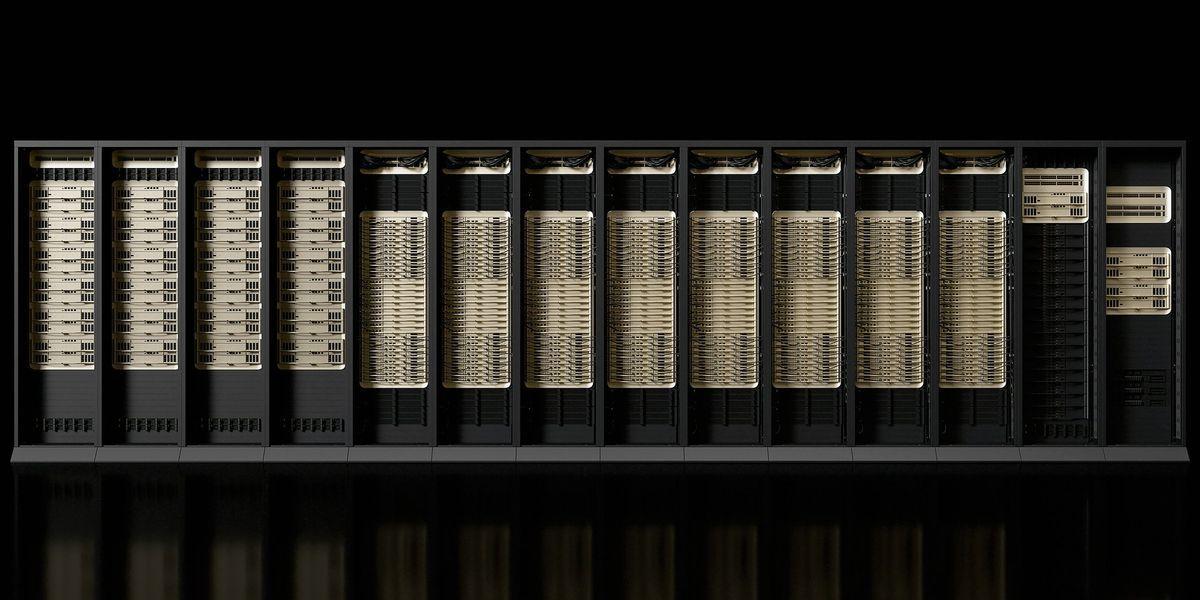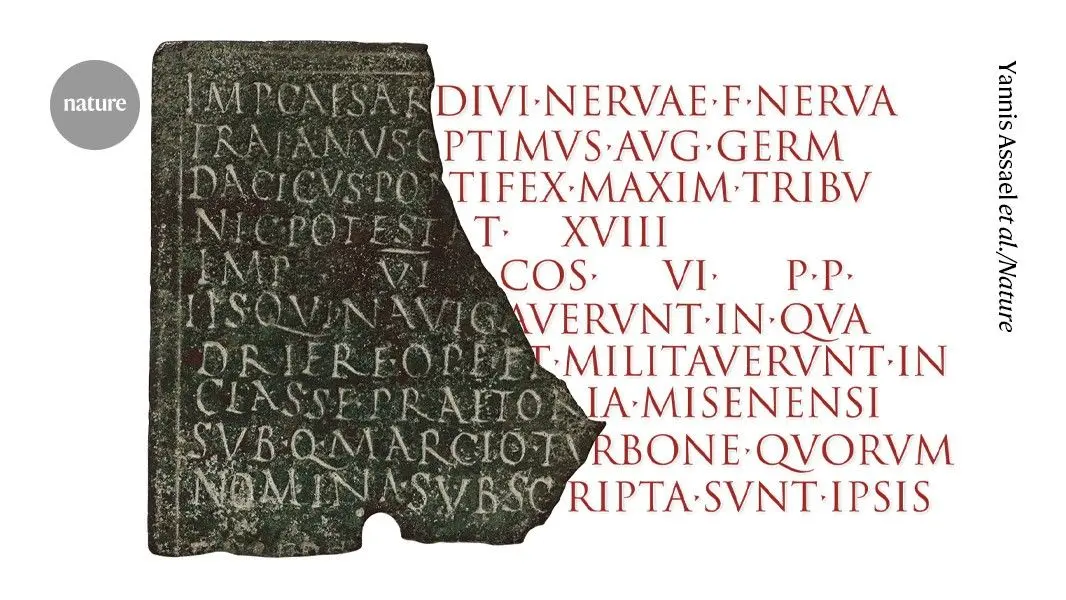AI Uncovers Hundreds of New Nazca Lines in Peruvian Desert
5 Sources
5 Sources
[1]
Hundreds of Mysterious Ancient Nazca Land Artworks Found with Aid of AI
Artificial intelligence has helped researchers to uncover hundreds of ancient land artworks in Peru. The mysterious pre-Hispanic figures, known as geoglyphs, are motifs etched into the ground via the movement of stones or gravel. Such figures have been found across the Nazca desert region in southern Peru on a high, arid plateau. The geoglyphs provide archaeologists with a unique window into the cultures and beliefs of the ancient people who created them, with the earliest examples dating back more than 2,000 years. The geoglyphs were designated as a UNESCO World Heritage Site in 1994. Field surveys that began in the 1940s and continue to the present day identified around 430 figurative geoglyphs depicting various figures, including animal and humanoid motifs, over a period of around a century. But in a study published in the journal PNAS, a team of researchers applied AI-assisted image analysis to high-resolution photographs of the entire Nazca region. This effort, led by Masato Sakai with the Faculty of Humanities and Social Sciences at Yamagata University in Japan, led to an accelerated rate of geoglyph discovery. The study identified an additional 303 geoglyphs over the course of only six months, nearly doubling the number of known examples. Even with limited training examples to work with, the developed AI approach was shown to be effective in detecting the smaller "relief-type" geoglyphs, which unlike the giant "line-type" geoglyphs are very difficult to discern. "This paper demonstrates how AI accelerates discoveries in archaeology, even in a region as well known as the United Nations Educational, Scientific and Cultural Organization (UNESCO) World Heritage site of Nazca," the authors wrote in the study. The researchers analyzed the form and location of the geoglyphs, which shed new light on their potential purpose or function. The team found that relief-type geoglyphs depict mainly human motifs or motifs of things modified by humans, such as domesticated animals and decapitated heads. These are typically located within viewing distance of ancient trails that crisscross the region and were most likely built and viewed at the individual or small-group level, the authors propose. Giant line-type figurative geoglyphs mainly depict wild animals. These are found an average of 34 meters (111 feet) from the elaborate ceremonial network of linear/trapezoidal geoglyphs, which suggests that they were probably built and used on a community level for ritual activities, according to the study. "Our vastly improved account of relief-type figurative geoglyphs reveals that they differ from line-type figurative geoglyphs beyond their style and size," the authors wrote. "The line-type and relief-type also differ in the motifs they depict, their distribution, and their relation to the meshwork of winding trails and the ceremonial network of linear/trapezoidal geoglyphs. "Taken together, this makes a compelling case for different nature and purposes of relief-type and line-type figurative geoglyphs: the former sharing information about human activities with individuals or small groups and the latter built and used by the community for ceremonial purposes."
[2]
AI discovers hundreds of ancient Nazca drawings in Peruvian desert
Archaeologists have used AI to discover hundreds of large-scale drawings depicting figures like llamas, decapitated human heads and killer whales armed with knives Hundreds of ancient drawings depicting decapitated human heads and domesticated llamas have been discovered in the Peruvian desert with the help of artificial intelligence. Archaeologists have previously linked these creations to the people of the Nazca culture, who started etching such images, called geoglyphs, into the ground around 2000 years ago. These geoglyphs are smaller and older than the Nazca lines and other figures found to date, which portray huge geometric shapes stretching several kilometres or wild animals about 90 metres long on average. The newly discovered images typically depict humanoids and domesticated animals as figures around 9 metres long. Some even hint at human sacrifice, portraying decapitated heads and killer whales armed with blades. "On some pottery from the Nazca period, there are scenes depicting orcas with knives cutting off human heads," says Masato Sakai at Yamagata University in Japan. "So we can position orcas as beings that carry out human sacrifice." Sakai and his colleagues found the smaller geoglyphs by training an AI model to look for them in aerial photos. The high-resolution photos covered an area about 10 times the size of Manhattan, encompassing the desert plateau called the Nazca Pampa and its surroundings, which are located on the UNESCO World Heritage Site for the Nazca lines. The AI then produced a gridded map that categorised the probability of each grid square containing geoglyphs. Researchers still spent more than 2600 hours manually inspecting the highest-probability photos and doing field inspections at the sites. But they estimate the AI helped speed up the screening process by a factor of 50 "by eliminating 98 per cent of low-probability aerial imagery from consideration and providing probabilities for the remaining 2 per cent", says co-author Marcus Freitag at IBM Research in New York. The researchers followed up on the AI suggestions to discover a total of 303 figurative geoglyphs during field surveys in 2022 and 2023. Of these figures, 178 geoglyphs were individually identified by the AI. Another 66 were not directly pinpointed, but the researchers found them within a group of geoglyphs the AI had highlighted. "The AI-based analysis of remote sensing data is a major step forward, since a complete map of the geoglyphs of the Nazca region is still not available," says Karsten Lambers at Leiden University in the Netherlands. But he also cautioned that "even this new, powerful technology is more likely to find the better visible geoglyphs - the low hanging fruits - than the more difficult ones that are likely still out there". Nearly 1000 AI-identified candidates still await inspection during future field surveys, says Sakai. Such smaller geoglyphs generally appear on hillsides near winding trails and probably featured in the "ritual activities of individuals or small groups". In contrast, the huge line geoglyphs were more likely to be the focus of community-wide rituals, he says. The AI screening process also offers hope of discovering geoglyphs in the broader region beyond the Nazca lines World Heritage Site, says David Beresford-Jones at the University of Cambridge in the UK. Speed is crucial because many geoglyphs "lie on the cusp of erasure through agricultural expansion, urban development and wind-power generation", he says.
[3]
AI research uncovers 300 ancient etchings in Peru's Nazca desert
Lima (AFP) - Japanese scientists have used artificial intelligence to uncover 303 new etchings in Peru's Nazca desert -- doubling the amount of known geoglyphs made some 2,000 years ago by a pre-Inca civilization. The fabled Nazca lines, a series of massive incisions on the desert floor depicting animals, plants, imaginary beings and geometric figures, have fascinated scientists ever since they were first discovered around a century ago. Best viewed from the air, the lines situated some 220 miles (350 kilometers) south of Lima are one of Peru's top tourist attractions. Announcing the new discoveries in Lima on Monday, archaeologist Masato Sakai, from Yamagata University, said: "The use of AI in research has allowed us to map the distribution of geoglyphs in a faster and more precise way." He said the findings were the fruit of collaboration between his university's Nazca Institute and the research division of the technology company IBM. "The traditional method of study, which consisted of visually identifying the geoglyphs from high-resolution images of this vast area, was slow and carried the risk of overlooking some of them," he added. The study was also published on Monday in the prestigious Proceedings of the National Academy of Sciences (PNAS) journal, describing how AI can be used to accelerate discoveries in archeology even in well-known sites. The paper said it had taken nearly a century to discover 430 figurative Nazca geoglyphs. Using AI, scientists found 303 more during only six months of field surveys. The AI model was particularly good at picking up smaller relief-type geoglyphs which are harder to spot with the naked eye. Among the new figures discovered were giant linear-type geoglyphs, mainly representing wild animals, but also smaller ones with motifs of abstract humanoids and domesticated camelids, a mammal from the camel family. Scientists used AI to analyze a vast amount of geospatial data produced by aircraft to identify areas where they might find more geoglyphs. The people that formed the Nazca civilization lived in the area of southwestern Peru from 200 BC to 700 AD. What drove them to create the lines, designated a UNESCO World Heritage site, is a mystery. Some scientists believe they have astrological and religious significance.
[4]
AI Survey Reveals Hundreds of 'Nazca Line' Geoglyphs
The recent survey doubles the count of known geoglyphs, bringing the total count to over 700, while showcasing how AI can be used in cultural heritage contexts. It took a century for researchers to discover 430 geoglyphs, some massive, spread across the ground in the Nazca region of Peru. Now, a team of scientists has nearly doubled the count of known geoglyphs in just six months, using an AI-driven approach to reveal some of the harder-to-spot figures. The Nazca Lines refer to a collection of these geoglyphs in the Nazca Pampa; between roughly 200 BCE and 500 CE, local groups removed the darker rocks on the arid landscapes surface, revealing the white sandy soil below. They did this on smaller scales but also on glyphs so large that they can only be properly seen from the air. The lines are ancient but were rediscovered en masse in the 20th century; nevertheless, some went under the radar. In 2020, a feline geoglyph -- as in, it depicts a cat -- was found on a hillside in the region. Last year, two members of the recent team identified four new geoglyphs using an object detection algorithm, but they didn't pursue a more comprehensive survey. Now, the larger team has done just that and been rewarded for their AI-assisted efforts. The recent model "focuses on relief-type geoglyphs that are small and difficult to identify since the distribution of the large line-type figurative geoglyphs is known from previous (manual) aerial studies," as the team wrote in the resulting paper, published earlier this week in the Proceedings of the National Academy of Sciences (PNAS). While convolutional neural networks are generally trained on tens of thousands of images, the recent team's model only trained on images of the few hundred known geoglyphs. IBM's geospatial platform PAIRS first cleaned up the data before feeding it into the model; then, the model split up the Nazca Pampa into a grid and highlighted sections that appeared to contain a glyph. The ID'd candidate glyphs were then fed to human archaeologists who separated the wheat from the chaff. Even with not much data to train its models, the team found the AI approach effectively identified geoglyphs. It proffered 1,309 potential glyphs, and over the next two months' worth of labor, the team identified 303 figurative geoglyphs and 42 newly identified geometric glyphs. The team also identified diverging patterns in what the larger and smaller glyphs depicted. The monumental glyphs generally depicted animals and plants, while the the relief-type geoglyphs depicted humans, decapitated heads, and domesticated camelids. The smaller geoglyphs are located, on average, roughly 141 feet (43 meters) from ancient trails that crisscross the Nazca Pampa region, which were likely used to view the glyphs. Of the newly discovered smaller geoglyphs, the 47 that depicted wildlife included figures of birds, cats, snakes, monkeys, foxes, killer whales, and fish. Large geospatial data technologies and data mining have hastened the pace of discovery in aerial archaeology, the team wrote in its paper. "Thus, AI may be at the brink of ushering in a revolution in archaeological discoveries like the revolution aerial imaging has had on the field."
[5]
AI uncovers 303 never-before-seen Nazca figures in Peru's desert
In just six months of fieldwork, AI identified 303 previously unknown figurative geoglyphs. The figures offer a glimpse of the ancient civilizations in the Nazca Pampa region. "We report the deployment of an AI system to the entire Nazca region, a UNESCO World Heritage site, leading to the discovery of 303 new figurative geoglyphs within only 6 months of field survey, nearly doubling the number of known figurative geoglyphs," the authors wrote in the study paper. Among the newly discovered Nazca Lines are alien-like human figures, severed heads, possible historical events, and a remarkably well-equipped killer whale. The ancient artworks were created by the Nazca civilization between 200 BC and 500 AD. Previously, it took almost a century to discover 430 Nazca geoglyphs without AI. As per Live Science, advances in satellite technology have allowed for the discovery of most geoglyphs in the past two decades. For this study, the researchers from Yamagata University trained the AI model to detect the subtle outlines of the geoglyphs. This helped researchers identify previously overlooked shapes in satellite imagery.
Share
Share
Copy Link
Researchers using artificial intelligence have discovered over 300 new geoglyphs in Peru's Nazca Desert, shedding light on ancient Andean cultures. The AI-powered survey has significantly expanded our understanding of these mysterious land drawings.

AI Revolutionizes Archaeological Discovery in Peru
In a groundbreaking development, artificial intelligence has unveiled hundreds of previously unknown ancient geoglyphs in Peru's Nazca Desert. Researchers from Yamagata University in Japan, led by cultural anthropologist Masato Sakai, have employed AI technology to identify 303 new figures etched into the desert landscape
1
.The Power of AI in Archaeological Research
The AI system, developed in collaboration with IBM Japan, was trained using data from known geoglyphs. This innovative approach allowed the technology to analyze satellite imagery and detect patterns invisible to the human eye. The AI's efficiency in identifying potential geoglyphs has dramatically accelerated the discovery process, accomplishing in a few months what would have taken humans decades
2
.Diverse Array of Newly Discovered Geoglyphs
The newly identified geoglyphs showcase a variety of designs, including humanoid figures, camelids (likely llamas or alpacas), and birds. These etchings, some as small as 3 meters and others up to 100 meters in length, are believed to date back to between 100 BC and 300 AD. The discovery has expanded the known repertoire of Nazca and Paracas culture artworks
3
.Implications for Understanding Ancient Andean Cultures
These findings offer new insights into the practices and beliefs of ancient Andean civilizations. The geoglyphs, created by removing dark stones to reveal lighter ground beneath, have long puzzled archaeologists. Theories about their purpose range from astronomical calendars to religious symbols. This discovery may help researchers better understand the cultural significance and historical context of these enigmatic designs
4
.Related Stories
Challenges in Preservation and Future Research
While the AI-powered discovery is a significant breakthrough, it also highlights the ongoing challenges in preserving these ancient artworks. Many of the newly found geoglyphs are at risk of destruction due to urban expansion and agricultural activities. The research team emphasizes the urgent need for conservation efforts to protect these invaluable cultural artifacts
5
.The Future of AI in Archaeology
This successful application of AI in archaeological research opens up new possibilities for future discoveries. The technology's ability to process vast amounts of data and identify subtle patterns could revolutionize how we explore and understand ancient sites worldwide. As AI continues to evolve, it may become an indispensable tool in uncovering hidden aspects of human history and cultural heritage.
References
Summarized by
Navi
[2]
[5]
Related Stories
Recent Highlights
1
X's Paywall Doesn't Stop Grok From Generating Nonconsensual Deepfakes and Explicit Images
Policy and Regulation

2
Nvidia Vera Rubin architecture slashes AI costs by 10x with advanced networking at its core
Technology

3
OpenAI launches ChatGPT Health to connect medical records to AI amid accuracy concerns
Technology








